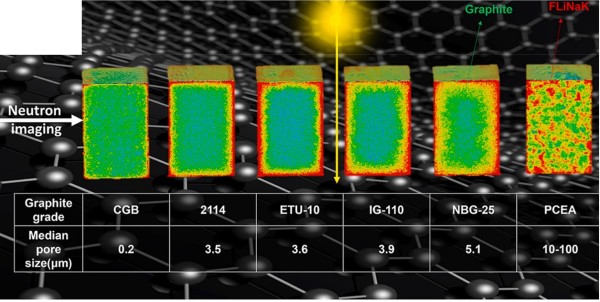Fluoride Salt (FLiNaK) Intrusion in Nuclear-grade Graphite

Scientific Achievement
The infiltration profiles of molten salt in nuclear-grade graphite were visualized and show that salt coverage (0.98%) at the center of historic-grade graphite (CGB) is much less than the 20.2% found in porous graphite (PCEA).
Significance and Impact
The work demonstrates a powerful technique to determine nondestructively salt distribution in nuclear reactor materials and the specific findings advance understanding of the relationship between graphite microstructure and salt penetrability, guiding the materials selection for molten salt reactors (MSR).
Research Details
- FLiNaK(LiF-NaF-KF(46.5-11.5-42mol%)) salt infiltration over different nuclear grade graphite was conducted.
- Neutron-tomography scans of the samples were obtained and analyzed to extract the depths of penetration and salt coverages.
“A neutron tomography study to visualize fluoride salt (FLiNaK) intrusion in nuclear-grade graphite,”
Jisue Moon, Nidia C. Gallego, Cristian I. Contescu, James R. Keiser, Dino Sulejmanovic, Yuxuan Zhang, and Erik Stringfellow
Carbon 213, 118258 (2023). DOI: https://doi.org/10.1016/j.carbon.2023.118258




